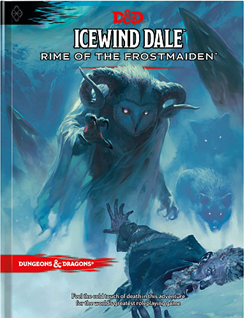As a follow-up to my post about the Plotless Campaign, consider running the first chapter of Icewind Dale: Rime of the Frostmaiden in such a manner.
In this structure, the characters are wandering adventurers, start each adventure walking into a new town, quickly discovering it has a problem, and solving it.
What is different about this from the standard Rime? You ignore the rationale about why they are in each town.
Instead of worrying about rumours and hooks to get them into each town, you just start the session in the town, with the characters meeting the quest-giver.
The session then gets straight into the action, and you end each session with the characters resolving the situation and leaving. They are itinerant adventurers, making their living in the Wild North.
You will recognise this sort of episodic treatment from many a episodic TV show, where each week is its own story with little relationship to what came before or what came later. (The original series of Star Trek is one such example).
Hunting the Man in Black
The variant to this is to give a reason for the visit for each time: They are looking for the man in black. (Otherwise known as Sephek Kaltro from the Cold-Hearted Killer starting quest).
You then alter each mission so either:
- The quest deals with the consequences of the man in black’s visit to the town, or
- The quest-giver offers information about the location of the man in black as part of the reward for completing the quest
Occasionally, the party might just be doing the quest because they need money and supplies. That is a fairly classic plot line as well.
Eventually, the story needs to close off. So, after running a number of episodes that have brought the characters up to almost fourth level (the recommended level for starting Chapter 2), the next episode begins with them entering the town where Sephek Kaltro is. And then they can deal with him and finish the first act of the campaign.
I would not use the suggested introduction to the quest, however. Instead, start with an explanation of who the characters are seeking, and just jump into the action from there. You can do it in voice-over mode; it likely works best if one of Sephek’s victims was a friend of the characters.
The Ten Towns. A lawless place where justice is rare. But for *character name*, justice is what he pursues. Justice for his murdered father/mother/husband/wife/friend/dog, who was killed in cold blood by the fugitive Sephek Kaltro. *Character* and his friends search one town after another for the murderer. Will this be the time they find him?
Why Use One of These Structures?
I am very fond of sandbox play, but this is not true of all players. Many want a more directed, story-driven experience. Or they do not want to deal with a bunch of decisions that are – ultimately – irrelevant or had bad solutions.
For players who just want an exciting experience each week, you can use the first version – the picaresque storytelling where the characters’ motivation is just their next job which puts food in their mouths. (Cue comparisons to the Dollars trilogy by Sergio Leone starring Clint Eastwood).
The second structure has the advantage of having been used in TV shows (The Fugitive, The Pretender, Quantum Leap, etc.) and thus is also familiar to the players. Again, you are choosing which quest the players do next, but they do have a reason beyond just survival. This works for players who enjoy more heroic or directed storylines.
There are other options for structuring the opening chapter of Rime of the Frostmaiden, but I hope this have given you a few ideas for how you might approach it!

